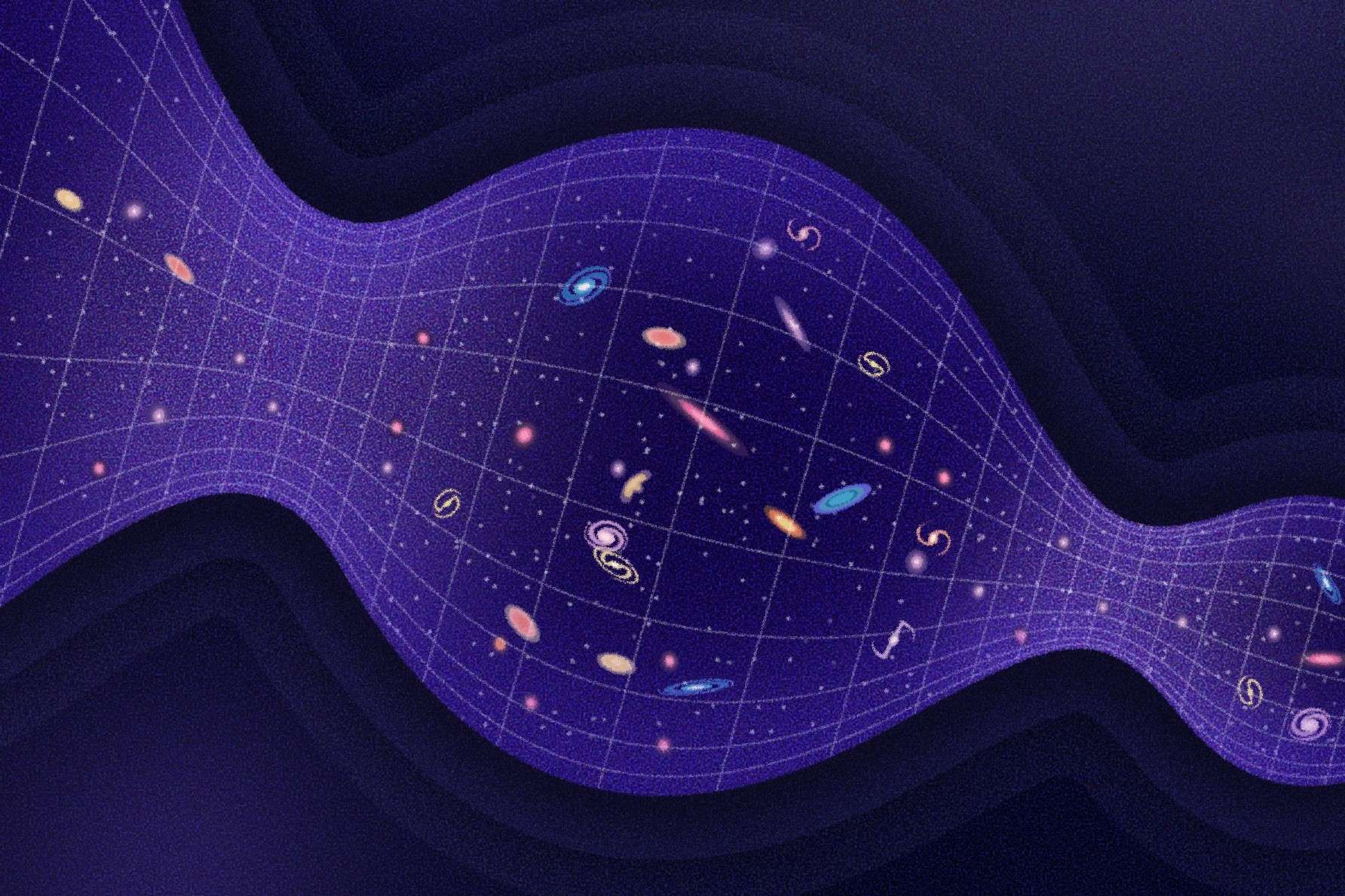
What is the Ekpyrotic universe? The Ekpyrotic universe is a cosmological model that suggests our universe was formed from the collision of two three-dimensional worlds, or branes, in a higher-dimensional space. Unlike the Big Bang theory, which posits a singular explosive event, the Ekpyrotic model proposes a more cyclical process. This theory aims to address some of the Big Bang's unresolved issues, like the horizon and flatness problems. Imagine two massive sheets floating in a higher-dimensional space, eventually colliding and creating the universe we know. This concept offers a fascinating alternative to traditional cosmology, blending elements of string theory and higher-dimensional physics.
What is the Ekpyrotic Universe?
The Ekpyrotic Universe theory offers a fascinating alternative to the traditional Big Bang model. It suggests that our universe was created from the collision of two three-dimensional worlds, or branes, in a higher-dimensional space. This theory provides intriguing insights into the origins and evolution of the cosmos.
- The term "Ekpyrotic" comes from the Greek word "ekpyrosis," meaning "conflagration" or "out of fire."
- Unlike the Big Bang, the Ekpyrotic model does not start from a singularity but from a pre-existing state.
- The theory was first proposed in 2001 by physicists Paul Steinhardt and Neil Turok.
- It suggests that the universe undergoes cyclic phases of expansion and contraction.
- The model incorporates elements of string theory, particularly the concept of branes.
- According to this theory, our universe is one of many in a higher-dimensional space.
- The collision of branes generates the energy needed to create matter and radiation.
- This model aims to solve several problems in cosmology, such as the horizon and flatness problems.
- It provides a natural explanation for the uniformity of the cosmic microwave background radiation.
- The theory also addresses the issue of dark energy, suggesting it is a result of the brane collision.
How Does the Ekpyrotic Universe Differ from the Big Bang?
The Ekpyrotic Universe theory presents a unique perspective on the creation and evolution of the cosmos, differing significantly from the Big Bang model. Here are some key differences:
- The Big Bang theory starts with a singularity, while the Ekpyrotic model does not.
- The Ekpyrotic model involves higher dimensions and branes, unlike the Big Bang.
- In the Ekpyrotic theory, the universe undergoes cyclic phases, whereas the Big Bang suggests a one-time event.
- The Ekpyrotic model provides a natural explanation for the homogeneity of the universe.
- It also offers solutions to the horizon and flatness problems without requiring inflation.
- The Big Bang theory struggles to explain dark energy, while the Ekpyrotic model incorporates it naturally.
- The Ekpyrotic Universe suggests that the universe is part of a larger multiverse.
- The model implies that time and space existed before the universe's creation.
- It suggests that the universe's current expansion phase will eventually reverse.
- The Ekpyrotic model can be tested through observations of cosmic microwave background radiation.
The Role of Branes in the Ekpyrotic Universe
Branes play a crucial role in the Ekpyrotic Universe theory. These multi-dimensional objects are central to the model's explanation of the universe's creation and evolution.
- Branes are multi-dimensional objects in string theory, ranging from one-dimensional strings to higher-dimensional surfaces.
- In the Ekpyrotic model, our universe is a three-dimensional brane.
- The collision of branes generates the energy needed to create matter and radiation.
- This collision is a key event in the Ekpyrotic model, analogous to the Big Bang in traditional cosmology.
- The separation and collision of branes drive the cyclic phases of the universe.
- Branes can exist in higher-dimensional spaces, known as the "bulk."
- The bulk is a higher-dimensional space where branes move and interact.
- The interaction between branes can create gravitational waves, which could be detected by future experiments.
- The concept of branes helps to explain the uniformity of the cosmic microwave background radiation.
- Branes also provide a framework for understanding dark energy and dark matter.
Challenges and Criticisms of the Ekpyrotic Universe
While the Ekpyrotic Universe theory offers intriguing possibilities, it also faces several challenges and criticisms. Here are some of the main points of contention:
- The theory is highly complex and requires advanced mathematics to describe.
- It relies on concepts from string theory, which are not yet fully understood or proven.
- Some physicists argue that the model lacks empirical evidence.
- The cyclic nature of the universe proposed by the Ekpyrotic model is difficult to test.
- Critics argue that the theory does not fully address all cosmological problems, such as the nature of dark matter.
Final Thoughts on the Ekpyrotic Universe
The Ekpyrotic universe theory offers a fascinating alternative to the Big Bang. It suggests our universe was born from the collision of two branes in a higher-dimensional space. This idea challenges traditional views, providing new insights into the origins and fate of our cosmos. While it’s still a developing theory, it has sparked significant interest and debate among physicists. Understanding this concept requires diving into complex physics and cosmology, but it’s worth the effort. The Ekpyrotic model not only addresses some of the Big Bang's shortcomings but also opens up exciting possibilities for future research. Whether this theory will stand the test of time remains to be seen, but it undeniably adds a rich layer to our understanding of the universe's beginnings. Keep an eye on this space; the universe might surprise us yet again.
Was this page helpful?
Our commitment to delivering trustworthy and engaging content is at the heart of what we do. Each fact on our site is contributed by real users like you, bringing a wealth of diverse insights and information. To ensure the highest standards of accuracy and reliability, our dedicated editors meticulously review each submission. This process guarantees that the facts we share are not only fascinating but also credible. Trust in our commitment to quality and authenticity as you explore and learn with us.
